
Ivan Konstantinovich Aivazovsky Painting Reproductions 1 of 16
1817-1900
Armenian-Russian Romanticism Painter
Ivan Aivazovsky was born in 1817 in the Crimean port city of Feodosia, then part of the Russian Empire, into an Armenian family of modest means but strong cultural identity. Baptized as Hovhannes Aivazian, his early years were shaped as much by the rhythms of a seaside town as by the echoes of an Armenian heritage that would remain central to his worldview and self-perception throughout his life. This convergence of influences - Eastern roots and Russian affiliation - defined his lifelong tension between periphery and empire, provincial solitude and international recognition.
His precocious artistic talents were first nurtured in local schools and later developed under more formal instruction at the Imperial Academy of Arts in Saint Petersburg. There, he studied landscape painting under Maxim Vorobiev and later immersed himself in battle scenes under the guidance of Alexander Sauerweid. Graduating with distinction at the age of twenty, Aivazovsky was already showing signs of what would become the hallmarks of his mature style - a strong sense of theatrical composition, a memory-driven approach to nature, and a compelling ability to dramatize light across fluid surfaces.
From 1840 to 1844, Aivazovsky embarked on an extensive journey through Europe, studying in Italy, exhibiting in Paris, and receiving medals from both the Pope and the Académie royale. This period served as both an artistic maturation and a personal transformation: his name was Italianized to “Giovani Aivazovsky,” and his exposure to the grandeur of Western art institutions confirmed his sense of artistic mission. While most Russian artists of his time sought to establish a native school of realism, Aivazovsky positioned himself instead as a cosmopolitan Romantic, aligning more closely with the traditions of Claude Lorrain and J.M.W. Turner than with his Russian contemporaries.
Upon returning to Russia in 1844, he was appointed official painter of the Russian Navy - a role that not only provided institutional support but also reaffirmed his orientation toward seascapes, battles, and naval ceremonies. Although he painted a wide range of subjects, from Armenian themes to historical dramas, his most enduring images came from the sea - not as topographical record, but as allegorical presence. His paintings were rarely plein air; they were acts of memory, of imagination, and of psychological introspection. His brush rendered the sea as stage, metaphor, and spiritual mirror.
The mid-nineteenth century marked both the zenith of Aivazovsky’s fame and the beginning of his marginalization within the Russian critical establishment. His Romanticism, increasingly at odds with the rising Realist movement led by artists such as Kramskoi and Repin, appeared mannered, even archaic, to some critics. Yet his public acclaim never waned. He was admired by emperors and sultans, honored by academies in Florence, Stuttgart, and Paris, and showered with decorations - many of which he would later discard in protest, most notably after the Armenian massacres of the 1890s.
Aivazovsky’s loyalty to the Romantic tradition was unwavering, even when the stylistic currents of the Russian art world drifted elsewhere. He remained in Feodosia, far from the urban centers of artistic discourse, and built a studio, a gallery, and eventually a museum in his native city. This physical and intellectual remove insulated him from new developments but also allowed a singular artistic voice to endure largely unchallenged. His paintings from this later period - often shimmering in silver and blue - demonstrate an increasing preoccupation with solitude and vastness, where human figures appear fragile, even irrelevant, against the grandeur of the natural world.
In addition to his prolific output - some 6,000 works by conservative estimate, possibly more - Aivazovsky also played a civic role in Feodosia, supporting infrastructure projects, establishing an archaeological museum, and even providing clean water to the town. His identity as both provincial and global was never reconciled, but perhaps never meant to be. He traveled to Constantinople, Egypt, America, and Armenia, always returning to the Black Sea as to a point of spiritual origin.
His relationship with his Armenian identity intensified in his later years. His second marriage, to an Armenian widow forty years his junior, brought him closer to his cultural roots. Following the atrocities against Armenians in the Ottoman Empire, Aivazovsky used his art to denounce violence and injustice, casting aside previous honors from the Turkish court with theatrical defiance. It was a rare moment when the private man and the public painter converged in a single act of political protest.
He died in 1900, buried in the courtyard of St. Sargis Armenian Church in Feodosia, beneath a marble sarcophagus inscribed with a line in Classical Armenian: “Born as a mortal, left the immortal memory of himself.” It is an epitaph not of sentiment, but of measure - an acknowledgment of a legacy secured not through revolution, but through consistency, craft, and a singular vision of the sea as an eternal theater of human longing and natural power.
Aivazovsky’s critical legacy remains divided. Admired by some for his technical mastery and evocative seascapes, dismissed by others for a perceived repetitiveness or lack of intellectual engagement, he stands somewhat apart from the trajectory of Russian art. His paintings defy categorization: Romantic in spirit, academic in execution, yet at times disarmingly modern in their abstraction of space and mood. If his art rarely changed, it is perhaps because he found early on a visual language both vast and intimate, and spent a lifetime refining its cadences.
His precocious artistic talents were first nurtured in local schools and later developed under more formal instruction at the Imperial Academy of Arts in Saint Petersburg. There, he studied landscape painting under Maxim Vorobiev and later immersed himself in battle scenes under the guidance of Alexander Sauerweid. Graduating with distinction at the age of twenty, Aivazovsky was already showing signs of what would become the hallmarks of his mature style - a strong sense of theatrical composition, a memory-driven approach to nature, and a compelling ability to dramatize light across fluid surfaces.
From 1840 to 1844, Aivazovsky embarked on an extensive journey through Europe, studying in Italy, exhibiting in Paris, and receiving medals from both the Pope and the Académie royale. This period served as both an artistic maturation and a personal transformation: his name was Italianized to “Giovani Aivazovsky,” and his exposure to the grandeur of Western art institutions confirmed his sense of artistic mission. While most Russian artists of his time sought to establish a native school of realism, Aivazovsky positioned himself instead as a cosmopolitan Romantic, aligning more closely with the traditions of Claude Lorrain and J.M.W. Turner than with his Russian contemporaries.
Upon returning to Russia in 1844, he was appointed official painter of the Russian Navy - a role that not only provided institutional support but also reaffirmed his orientation toward seascapes, battles, and naval ceremonies. Although he painted a wide range of subjects, from Armenian themes to historical dramas, his most enduring images came from the sea - not as topographical record, but as allegorical presence. His paintings were rarely plein air; they were acts of memory, of imagination, and of psychological introspection. His brush rendered the sea as stage, metaphor, and spiritual mirror.
The mid-nineteenth century marked both the zenith of Aivazovsky’s fame and the beginning of his marginalization within the Russian critical establishment. His Romanticism, increasingly at odds with the rising Realist movement led by artists such as Kramskoi and Repin, appeared mannered, even archaic, to some critics. Yet his public acclaim never waned. He was admired by emperors and sultans, honored by academies in Florence, Stuttgart, and Paris, and showered with decorations - many of which he would later discard in protest, most notably after the Armenian massacres of the 1890s.
Aivazovsky’s loyalty to the Romantic tradition was unwavering, even when the stylistic currents of the Russian art world drifted elsewhere. He remained in Feodosia, far from the urban centers of artistic discourse, and built a studio, a gallery, and eventually a museum in his native city. This physical and intellectual remove insulated him from new developments but also allowed a singular artistic voice to endure largely unchallenged. His paintings from this later period - often shimmering in silver and blue - demonstrate an increasing preoccupation with solitude and vastness, where human figures appear fragile, even irrelevant, against the grandeur of the natural world.
In addition to his prolific output - some 6,000 works by conservative estimate, possibly more - Aivazovsky also played a civic role in Feodosia, supporting infrastructure projects, establishing an archaeological museum, and even providing clean water to the town. His identity as both provincial and global was never reconciled, but perhaps never meant to be. He traveled to Constantinople, Egypt, America, and Armenia, always returning to the Black Sea as to a point of spiritual origin.
His relationship with his Armenian identity intensified in his later years. His second marriage, to an Armenian widow forty years his junior, brought him closer to his cultural roots. Following the atrocities against Armenians in the Ottoman Empire, Aivazovsky used his art to denounce violence and injustice, casting aside previous honors from the Turkish court with theatrical defiance. It was a rare moment when the private man and the public painter converged in a single act of political protest.
He died in 1900, buried in the courtyard of St. Sargis Armenian Church in Feodosia, beneath a marble sarcophagus inscribed with a line in Classical Armenian: “Born as a mortal, left the immortal memory of himself.” It is an epitaph not of sentiment, but of measure - an acknowledgment of a legacy secured not through revolution, but through consistency, craft, and a singular vision of the sea as an eternal theater of human longing and natural power.
Aivazovsky’s critical legacy remains divided. Admired by some for his technical mastery and evocative seascapes, dismissed by others for a perceived repetitiveness or lack of intellectual engagement, he stands somewhat apart from the trajectory of Russian art. His paintings defy categorization: Romantic in spirit, academic in execution, yet at times disarmingly modern in their abstraction of space and mood. If his art rarely changed, it is perhaps because he found early on a visual language both vast and intimate, and spent a lifetime refining its cadences.
379 Aivazovsky Paintings

The Ninth Wave 1850
Oil Painting
$1283
$1283
Canvas Print
$62.46
$62.46
SKU: AYV-10
Ivan Konstantinovich Aivazovsky
Original Size: 221 x 332 cm
State Russian Museum, St. Petersburg, Russia
Ivan Konstantinovich Aivazovsky
Original Size: 221 x 332 cm
State Russian Museum, St. Petersburg, Russia

Among the Waves 1898
Oil Painting
$1369
$1369
Canvas Print
$76.65
$76.65
SKU: AYV-11
Ivan Konstantinovich Aivazovsky
Original Size: 285 x 429 cm
I. K. Aivazovsky Museum, Feodosia, Ukraine
Ivan Konstantinovich Aivazovsky
Original Size: 285 x 429 cm
I. K. Aivazovsky Museum, Feodosia, Ukraine

The Black Sea 1881
Oil Painting
$947
$947
Canvas Print
$110.58
$110.58
SKU: AYV-12
Ivan Konstantinovich Aivazovsky
Original Size: 149 x 208 cm
The Tretyakov Gallery, Moscow, Russia
Ivan Konstantinovich Aivazovsky
Original Size: 149 x 208 cm
The Tretyakov Gallery, Moscow, Russia

Ice Mountains in Antarctica, Icebergs 1870
Oil Painting
$1233
$1233
Canvas Print
$76.11
$76.11
SKU: AYV-13
Ivan Konstantinovich Aivazovsky
Original Size: 112 x 136 cm
I. K. Aivazovsky Museum, Feodosia, Ukraine
Ivan Konstantinovich Aivazovsky
Original Size: 112 x 136 cm
I. K. Aivazovsky Museum, Feodosia, Ukraine
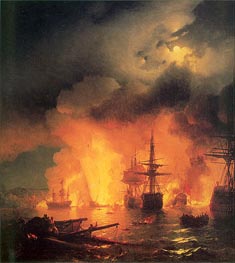
The Battle of Chesma, 25-26 June 1770 1848
Oil Painting
$1689
$1689
Canvas Print
$88.74
$88.74
SKU: AYV-14
Ivan Konstantinovich Aivazovsky
Original Size: 193 x 183 cm
I. K. Aivazovsky Museum, Feodosia, Ukraine
Ivan Konstantinovich Aivazovsky
Original Size: 193 x 183 cm
I. K. Aivazovsky Museum, Feodosia, Ukraine
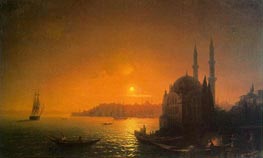
View of Constantinople by Moonlight 1846
Oil Painting
$1289
$1289
Canvas Print
$61.93
$61.93
SKU: AYV-15
Ivan Konstantinovich Aivazovsky
Original Size: 124 x 192 cm
State Russian Museum, St. Petersburg, Russia
Ivan Konstantinovich Aivazovsky
Original Size: 124 x 192 cm
State Russian Museum, St. Petersburg, Russia
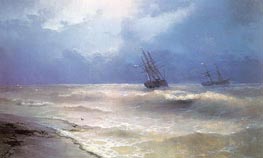
White-Caps on the Coast of the Crimea 1892
Oil Painting
$1194
$1194
Canvas Print
$61.93
$61.93
SKU: AYV-16
Ivan Konstantinovich Aivazovsky
Original Size: 130 x 217 cm
I. K. Aivazovsky Museum, Feodosia, Ukraine
Ivan Konstantinovich Aivazovsky
Original Size: 130 x 217 cm
I. K. Aivazovsky Museum, Feodosia, Ukraine
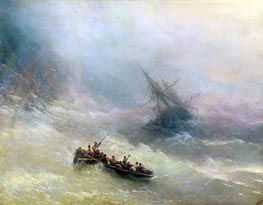
The Rainbow 1873
Oil Painting
$1233
$1233
Canvas Print
$72.87
$72.87
SKU: AYV-17
Ivan Konstantinovich Aivazovsky
Original Size: 102 x 132 cm
The Tretyakov Gallery, Moscow, Russia
Ivan Konstantinovich Aivazovsky
Original Size: 102 x 132 cm
The Tretyakov Gallery, Moscow, Russia

Night. A Blue Wave 1876
Oil Painting
$852
$852
Canvas Print
$92.50
$92.50
SKU: AYV-18
Ivan Konstantinovich Aivazovsky
Original Size: 47 x 64 cm
Private Collection
Ivan Konstantinovich Aivazovsky
Original Size: 47 x 64 cm
Private Collection

Ukrainian Landscape at the Moon 1869
Oil Painting
$1165
$1165
Canvas Print
$69.12
$69.12
SKU: AYV-19
Ivan Konstantinovich Aivazovsky
Original Size: 60 x 82 cm
The Tretyakov Gallery, Moscow, Russia
Ivan Konstantinovich Aivazovsky
Original Size: 60 x 82 cm
The Tretyakov Gallery, Moscow, Russia

The Volga at Zhigulev Hills 1887
Oil Painting
$1214
$1214
Canvas Print
$91.43
$91.43
SKU: AYV-20
Ivan Konstantinovich Aivazovsky
Original Size: 129 x 219.5 cm
Museum of Russian Art, Kiev, Ukraine
Ivan Konstantinovich Aivazovsky
Original Size: 129 x 219.5 cm
Museum of Russian Art, Kiev, Ukraine
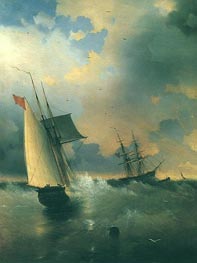
The Windjamer, Sailing-Ship 1859
Oil Painting
$1194
$1194
Canvas Print
$69.28
$69.28
SKU: AYV-21
Ivan Konstantinovich Aivazovsky
Original Size: 72.5 x 58 cm
The Odessa Fine Arts Museum, Odessa, Ukraine
Ivan Konstantinovich Aivazovsky
Original Size: 72.5 x 58 cm
The Odessa Fine Arts Museum, Odessa, Ukraine
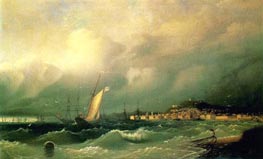
View of Feodosia 1845
Oil Painting
$1387
$1387
SKU: AYV-22
Ivan Konstantinovich Aivazovsky
Original Size: unknown
Art Gallery, Yerevan, Armenia
Ivan Konstantinovich Aivazovsky
Original Size: unknown
Art Gallery, Yerevan, Armenia
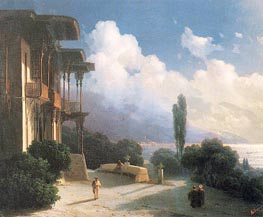
The Vicinities of Yalta at Night 1866
Oil Painting
$1061
$1061
Canvas Print
$61.93
$61.93
SKU: AYV-23
Ivan Konstantinovich Aivazovsky
Original Size: 40 x 48 cm
Unknown Location
Ivan Konstantinovich Aivazovsky
Original Size: 40 x 48 cm
Unknown Location
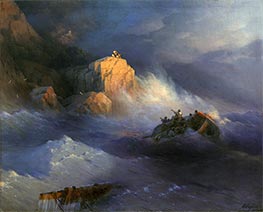
Shipwreck 1876
Oil Painting
$1309
$1309
Canvas Print
$75.77
$75.77
SKU: AYV-24
Ivan Konstantinovich Aivazovsky
Original Size: 132 x 170 cm
I. K. Aivazovsky Museum, Feodosia, Ukraine
Ivan Konstantinovich Aivazovsky
Original Size: 132 x 170 cm
I. K. Aivazovsky Museum, Feodosia, Ukraine

The Maria in a Gale 1892
Oil Painting
$1407
$1407
Canvas Print
$61.93
$61.93
SKU: AYV-25
Ivan Konstantinovich Aivazovsky
Original Size: 224 x 354 cm
I. K. Aivazovsky Museum, Feodosia, Ukraine
Ivan Konstantinovich Aivazovsky
Original Size: 224 x 354 cm
I. K. Aivazovsky Museum, Feodosia, Ukraine
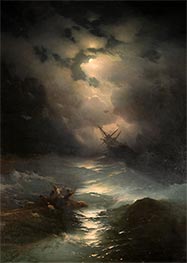
Storm in the North Sea 1865
Oil Painting
$1251
$1251
Canvas Print
$69.62
$69.62
SKU: AYV-26
Ivan Konstantinovich Aivazovsky
Original Size: 269 x 195 cm
I. K. Aivazovsky Museum, Feodosia, Ukraine
Ivan Konstantinovich Aivazovsky
Original Size: 269 x 195 cm
I. K. Aivazovsky Museum, Feodosia, Ukraine
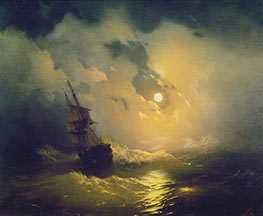
Storm on the Sea at Night 1849
Oil Painting
$967
$967
SKU: AYV-27
Ivan Konstantinovich Aivazovsky
Original Size: 89 x 106 cm
The Grand Palace at Peterhof, St. Petersburg, Russia
Ivan Konstantinovich Aivazovsky
Original Size: 89 x 106 cm
The Grand Palace at Peterhof, St. Petersburg, Russia
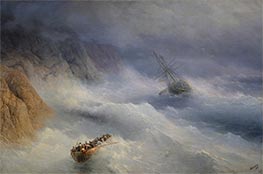
Storm at Cape Aya 1875
Oil Painting
$1470
$1470
Canvas Print
$61.95
$61.95
SKU: AYV-28
Ivan Konstantinovich Aivazovsky
Original Size: 215 x 325 cm
State Russian Museum, St. Petersburg, Russia
Ivan Konstantinovich Aivazovsky
Original Size: 215 x 325 cm
State Russian Museum, St. Petersburg, Russia
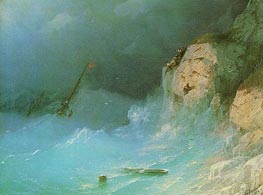
Shipwreck 1864
Oil Painting
$1289
$1289
Canvas Print
$68.60
$68.60
SKU: AYV-29
Ivan Konstantinovich Aivazovsky
Original Size: 58 x 78 cm
Art Gallery, Echmiadzin, Armenia
Ivan Konstantinovich Aivazovsky
Original Size: 58 x 78 cm
Art Gallery, Echmiadzin, Armenia

The Battle in the Straits of Chios, 24 June 1770 1848
Oil Painting
$1824
$1824
Canvas Print
$88.91
$88.91
SKU: AYV-30
Ivan Konstantinovich Aivazovsky
Original Size: 220 x 190 cm
I. K. Aivazovsky Museum, Feodosia, Ukraine
Ivan Konstantinovich Aivazovsky
Original Size: 220 x 190 cm
I. K. Aivazovsky Museum, Feodosia, Ukraine
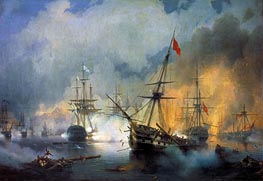
The Battle of Navarino, 20th October 1827 1846
Oil Painting
$1844
$1844
Canvas Print
$64.51
$64.51
SKU: AYV-31
Ivan Konstantinovich Aivazovsky
Original Size: 172 x 234 cm
Naval Engineering Academy, St. Petersburg, Russia
Ivan Konstantinovich Aivazovsky
Original Size: 172 x 234 cm
Naval Engineering Academy, St. Petersburg, Russia

Storm in Arctic Ocean 1864
Oil Painting
$1233
$1233
Canvas Print
$67.06
$67.06
SKU: AYV-32
Ivan Konstantinovich Aivazovsky
Original Size: 209.5 x 151.5 cm
I. K. Aivazovsky Museum, Feodosia, Ukraine
Ivan Konstantinovich Aivazovsky
Original Size: 209.5 x 151.5 cm
I. K. Aivazovsky Museum, Feodosia, Ukraine
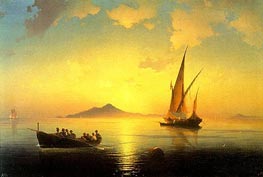
The Bay of Naples 1841
Oil Painting
$1061
$1061
Canvas Print
$61.95
$61.95
SKU: AYV-33
Ivan Konstantinovich Aivazovsky
Original Size: 73 x 108 cm
The Grand Palace at Peterhof, St. Petersburg, Russia
Ivan Konstantinovich Aivazovsky
Original Size: 73 x 108 cm
The Grand Palace at Peterhof, St. Petersburg, Russia